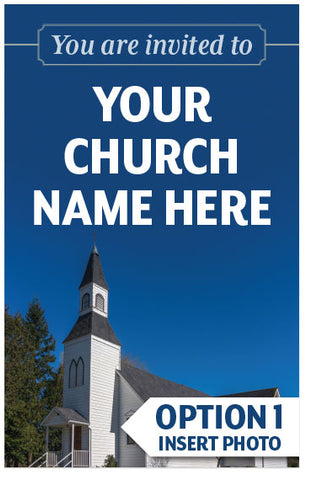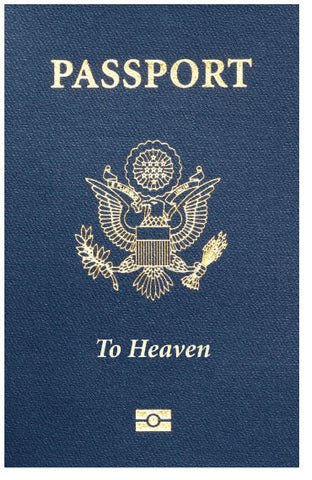The Bridge of Salvation (NASB)
Special-Order Folded Tract
 NOTE: This item is custom-printed to order (click for more details).
NOTE: This item is custom-printed to order (click for more details).
This tract is from our print-on-demand library, and is not kept in stock. Select the options below, and we will custom-print a batch just for you. Because this item is custom-printed, you can add your custom imprint to the back page at no extra cost.
- Estimated shipping date: Thursday, December 4 (Click for more details)
- SKU:
- Discounts: Discount coupons do not apply to this item
- Format: Folded Tract
- Size: 3.5 inches x 5.5 inches
- Pages: 4
- Imprinting: Available with 5 lines of custom text
- Version: NASB
- Returns: Because this item is custom-printed to order, it cannot be returned.
Show all item details
The full text of this tract is shown below in the NASB version. (Do you want to print this tract in a different version than the one listed? Contact us and let us know what you're looking for—we may be able to create the alternate version for you at no charge.)
Michigan is made up of two peninsulas whose shores touch four of the five Great Lakes. Before the Mackinac Bridge was completed in 1957, the only way to make the five-mile trip across the Straits of Mackinac between the Upper and Lower Peninsulas was a very slow ferry ride.
Designed by Dr. David B. Steinman, the Mackinac Bridge is one of the largest single-span bridges in the world. The suspension bridge (including the anchorages) measures 8,614 feet; the total length of the bridge and its approaches is 26,444 feet. Built on piers resting on bedrock 200 feet below water level, with towers rising 552 feet above the water, it is hung on two cables, each 24½ inches in diameter. In each cable there are 12,580 strands of wire, with a total length of 42,000 miles. Quite literally, the cables had to be “spun” one strand at a time, since the total weight of 11,840 tons could not be lifted! Construction of the bridge took 3½ years at a total cost of one hundred million dollars. This bridge is both a remarkable engineering feat and a work of art. Dr. Steinman insisted that the 552 foot towers be painted ivory and that the span itself be green; he was careful to preserve the grace and setting of the structure so that its natural lines would be as graceful as a harp.
Because of its capacity of 6,000 cars per hour (compared with the 462 cars per hour capacity of the state ferry service), the bridge has greatly reduced the lines of cars which could stretch for many miles causing long delays. Most important of all, the bridge has joined the Upper Peninsula and Lower Peninsula, eliminating a geographical barrier, and has proved the wisdom of those who guided it through its financing, designing, and building.
There is a barrier between God and man caused by sin—our failure to meet God’s “design specifications.” We’ve all experienced such things as selfishness, unkindness, and anger out of control.
“Your iniquities have made a separation between you and your God, and your sins have hidden His face from you” (Isaiah 59:2). In order to “bridge” that gap, God, in His great love, designed and constructed a tremendous bridge at a cost beyond computation. We may call it the Bridge of Salvation. The price paid for building this bridge was the life of the eternal Son of God, infinite in value, and willingly laid down in death at Calvary and taken up in the power of resurrection. There is no other bridge like it, for it is the only way from earth to heaven. Jesus says, “I am the way, and the truth, and the life; no one comes to the Father but through Me” (John 14:6).
To cross the Mackinac Bridge, travelers must pay a toll. The passage across the Bridge of Salvation is free, with but these two conditions: “Repentance toward God and faith in our Lord Jesus Christ” (Acts 20:21). The approach to the Bridge of Salvation is open to all, for Jesus says, “The one who comes to Me I will certainly not cast out” (John 6:37).
It is said that during high winds, the Mackinac Bridge sways three inches, and during a storm some travelers are fearful for their safety. In contrast, the Bridge of Salvation, built on the solid pillars of the finished work of Christ and God’s unchangeable Word, cannot be moved. The traveler is as secure as the living Christ Himself in the glory, held by the omnipotent cables of His love and power (1 Peter 1:5).
Unlike the Mackinac Bridge which needs constant maintenance work, the sacrifice of Christ on the cross for our sins is a finished work: “Christ also died for sins once for all, the just for the unjust, so that He might bring us to God” (1 Peter 3:18; Hebrews 10:10-17).
Won’t you, dear reader, as a traveler to eternity, place your feet in faith upon this Bridge of Salvation now? Claim the free passage offered to you in the Saviour’s words, “Truly, truly, I say to you, he who hears My word, and believes Him who sent Me, has eternal life, and does not come into judgment, but has passed out of death into life” (John 5:24). —D.T.J.











